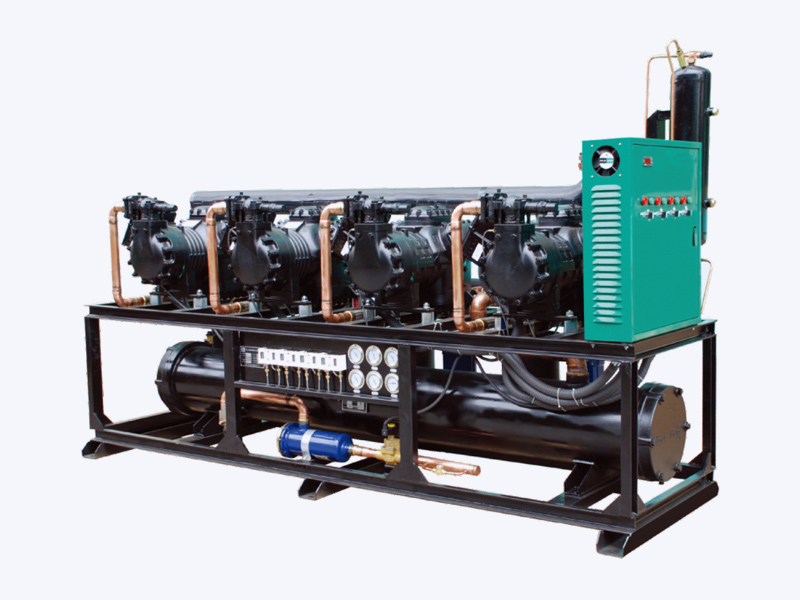18
Mar
Keeping a condensing unit in optimal condition requires regular maintenance to ensure efficient and reliable operation. Here are some common maintenance tasks:
Cleaning the Condenser Coils: Condenser coils play a critical role in transferring heat from the refrigerant to the surrounding air. Over time, dirt, dust, and debris accumulate on the coils, hindering heat transfer and reducing the efficiency of the condensing unit. To clean the coils effectively, disconnect power to the unit and use a soft brush, compressed air, or a vacuum cleaner with a soft brush attachment to gently remove debris. Ensure that you brush in the direction of the fins to avoid bending them. For stubborn dirt or grease buildup, a mild detergent solution and water can be used to carefully clean the coils, followed by thorough rinsing with clean water.
Inspecting and Cleaning the Fan Blades: Fan blades are responsible for drawing air over the condenser coils, facilitating heat exchange. Any damage or obstruction to the fan blades can impede airflow and compromise the unit's efficiency. Regularly inspect the fan blades for signs of damage, such as cracks or chips, and ensure they are securely attached to the motor shaft. Clean the blades using a soft cloth or brush to remove any dirt or debris that may have accumulated. Check the motor bearings for proper lubrication and smooth operation.
Checking Refrigerant Levels: Proper refrigerant charge is essential for the efficient operation of the condensing unit. Too little or too much refrigerant can lead to decreased performance, increased energy consumption, and potential damage to the compressor. Utilize gauges to measure the high and low side pressures and compare them to manufacturer specifications. If refrigerant levels are found to be low, locate and repair any leaks before recharging the system with the correct amount of refrigerant. Ensure that refrigerant handling procedures are followed to prevent environmental contamination.
Inspecting Electrical Components: The electrical components of a condensing unit, including wiring, capacitors, contactors, and relays, are vital for proper operation. Regularly inspect these components for signs of wear, damage, or overheating. Loose connections can cause voltage drops, increased electrical resistance, and potential equipment failure. Tighten any loose connections and replace damaged or worn components as needed.
Inspecting and Cleaning the Condensate Drain: Condensate drains remove moisture collected during the cooling process from the condensing unit. Over time, algae, mold, and debris can accumulate in the drain line, causing blockages and potential water damage. Inspect the condensate drain regularly for obstructions and clean it using a stiff brush or compressed air if necessary. Ensure that the drain line is sloped properly to facilitate drainage and prevent standing water.
Checking and Adjusting Refrigerant Pressures: Proper refrigerant pressures are crucial for maintaining optimal system performance and efficiency. Use pressure gauges to monitor the high and low side pressures and compare them to manufacturer specifications. Adjust refrigerant charge as needed to achieve the recommended pressures, taking into account factors such as ambient temperature and load conditions. Avoid overcharging or undercharging the system, as this can lead to inefficiency, compressor damage, and reduced lifespan.
Inspecting Insulation and Seals: Insulation and seals help to prevent heat gain and maintain temperature stability within the condensing unit enclosure. Inspect insulation materials for signs of damage, deterioration, or moisture intrusion. Replace any damaged insulation promptly to prevent energy loss and ensure proper thermal efficiency. Inspect seals around access panels, doors, and refrigerant line penetrations for gaps or leaks. Replace worn or damaged seals to maintain a tight seal and prevent air infiltration.
Semi-Hermetic Compressor Parallel Condensing Unit

Semi-Hermetic Compressor Parallel Condensing Unit


 English
English عربى
عربى 简体中文
简体中文












